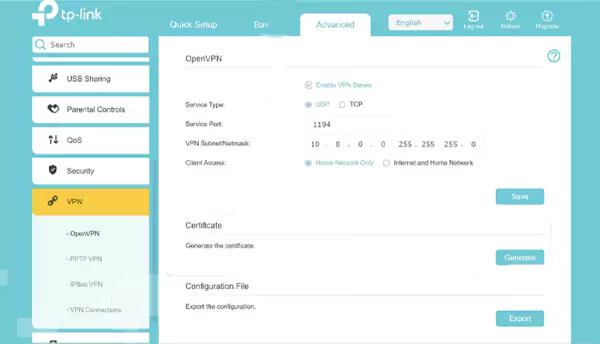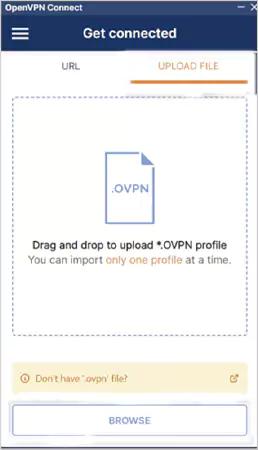You need to install the VPN extension from the Chrome web store, select a server location, and click on connect.

In this digital era, the internet governs most of the aspects of our lives, making it crucial to find the perfect internet services for your needs. A VPN helps you safeguard your online activity.
While you can easily use commercial VPNs, you can also create your own VPN if you are a tech enthusiast and have some free time. The cost of building a server depends on different factors.
Let’s discuss how to make your own VPN server for free Android. We will also cover the best practices while hosting a server and compare it with commercial services to provide you with a clear picture.

Yes, you can build your VPN server with a few different methods.
You need to set up a server on a device like a computer or router, and then configure your devices to connect to it. This process requires technical knowledge, and it is not advisable for everyone due to its complex nature.
However, it can be a great tool for someone who has specific privacy needs. It gives you full control over your data and security settings. Here are some more possible reasons to build your own VPN:
Now that we know about the reality of building a VPN by yourself, let’s learn how to create a VPN free with 2 different methods.
To create your own VPN to use on your Android devices, you need to set up a different device, such as a router, computer, cloud server, etc. This facilitates secure and remote connections to your network.
Here, we will learn how to make a free VPN with the help of a router and other home devices. You can use this server on any device (it is not restricted to Android only).
This method of setting up a VPN creates a private and secure connection to your home network. It allows you to securely access devices and remotely transfer files. Here are the step-by-step instructions for the process:


(This is an optional step, required if your ISP blocks VPN ports.)

Now, you just need to enter your VPN login credentials and connect to the server. You need to import the .opvn file once for each device. If you face any issues, go through your router’s manual for troubleshooting.
Another way to build your own VPN server is to install VPN software on your spare device. This will encrypt your traffic and route it through your home network, allowing you to access the internet as if you were at home.
Follow the given steps to set up a VPN on an Android device:
By following these steps, one can easily build their own VPN setup and enjoy safe and private browsing.
You can also create a VPN server by using a reliable cloud platform. Many platforms also offer free credits for new users, and the paid plans are not that expensive either. DigitalOcean, AWS, Vultr, Linode, and Scaleway are some of the popular cloud servers.
This method allows you to rent a server in any country of your choice, opening doors to region-specific content. It is ideal for those who are looking for the best VPNs for Netflix and other streaming platforms.
Setting up a cloud VPN requires a bit of technical knowledge and familiarity with command-line tools. Let’s discuss an example using AWS (instructions may vary as per the platforms).
That’s it, now just follow the platform-specific instructions to connect your Android, Windows, Mac, or iOS devices.

Hosting your own VPN servers comes with several security vulnerabilities. So, here are some of the best practices everyone should follow:
These are some of the essential tips you should follow while using a DIY server for VPN needs. It will reduce the gap between your own VPN setup and a commercial VPN service. Speaking of the gap, let’s look at the difference between your DIY server and commercial VPNs.
Look at the table below to understand the key differences between your own VPN server and a commercial VPN provider.
| Basis | Creating Your Own VPN Server | Existing VPN Services |
| Cost | It may vary as per the method. The cost will increase with every added feature. | Various affordable monthly and annual subscriptions are available. |
| Setup and Maintenance | Requires manual management, regular maintenance, and security updates. | Fully automated maintenance and security management. |
| Customization | Full control over server settings, network setup, and protocols. | User-friendly customization and protocol settings. |
| Technical Skills Required | Sophisticated technical knowledge and network expertise | No need for technical knowledge. One can just download the service and connect. |
| Server Network | Limited to your resources. | Multiple global networks are available. |
| Speed | It depends on the personal server and configuration. | Premium providers offer optimized servers for high-speed and stable connections. |
| Security and Privacy | Risk of misconfiguration and outdated protocols. | No-logs policy and strong encryption technology. |
| Features | Every additional feature requires more money and resources. | Advanced features like ad-blocking, split tunneling, and kill switch. |
Creating your own VPN server is a complex task that comes with various vulnerabilities. For most people, choosing strong and reliable VPN services like Surfshark and NordVPN is a much better option than hosting a server. It is less technical and offers various advantages as mentioned in the above table.
However, a personal VPN server gives you full control over your data and can be a learning experience for tech enthusiasts. In the end, the choice is yours.
We hope that this detailed article will help you in making an informed decision. Make sure you prioritize your safety first while choosing a VPN server.
You need to install the VPN extension from the Chrome web store, select a server location, and click on connect.
Yes, Android devices have built-in VPN clients for L2TP, PTTP, and IPsec. Users will still need information from the administrator to connect.
It depends on the cost of the hardware and the level of security and privacy required. If you are someone who uses a VPN for occasional browsing, then it is advisable to use a browser extension of a free VPN.
With the help of a router, home devices, and cloud servers, you can build your own VPN setup. You may also need to have some programming and networking knowledge.
Yes, it is a legal process. However, the risk of security is a major concern with DIY VPN servers.
Regular maintenance, security updates, and the technical knowledge required to set up your own VPN is a time-consuming job, making it less attractive.
Subscribe to our newsletter and get top Tech, Gaming & Streaming latest news, updates and amazing offers delivered directly in your inbox.